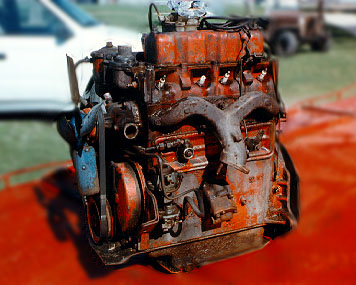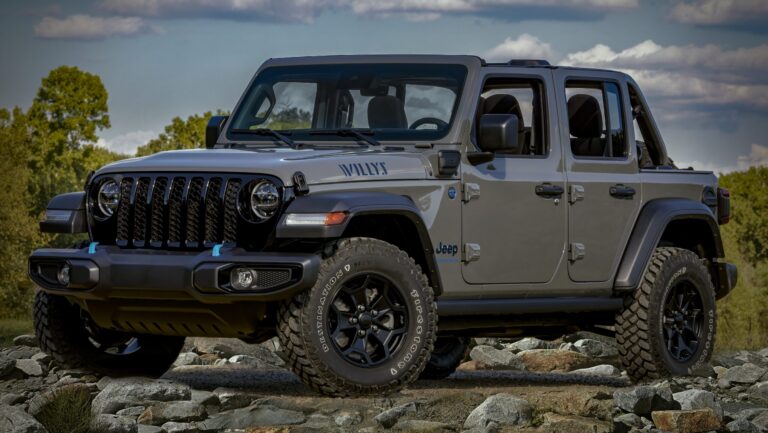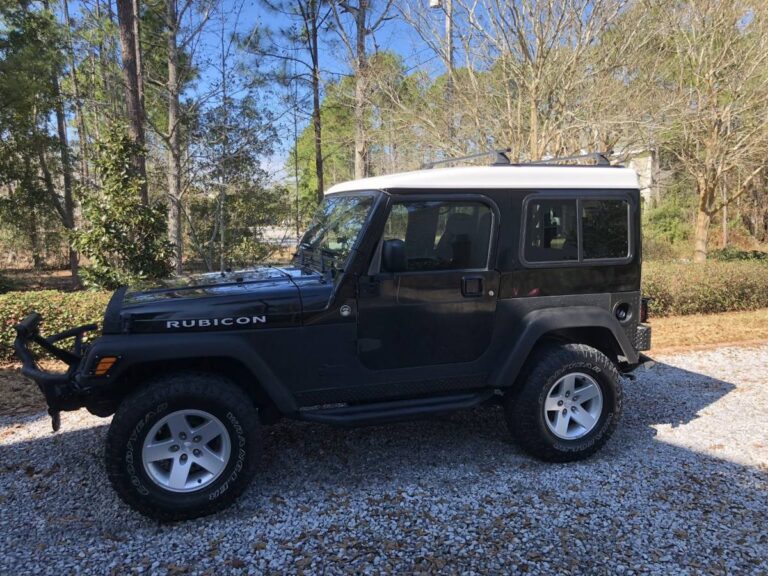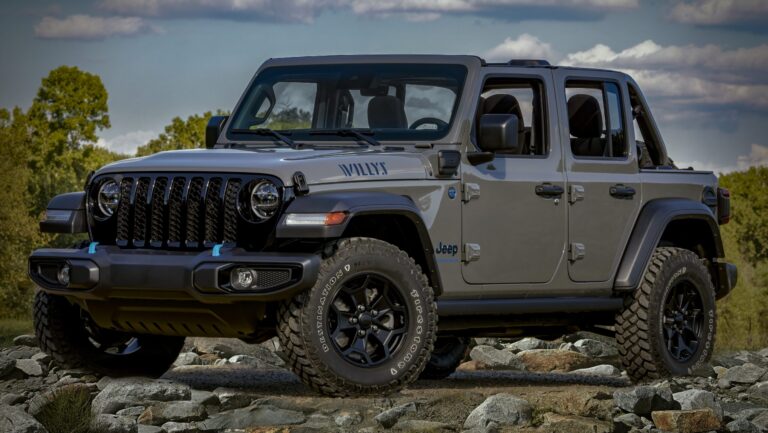Jeep F Head Engine For Sale: A Comprehensive Guide for Enthusiasts and Restorers
Jeep F Head Engine For Sale: A Comprehensive Guide for Enthusiasts and Restorers jeeps.truckstrend.com
The iconic Jeep has captivated hearts for decades, renowned for its rugged durability and off-road prowess. Central to many classic Jeep models from the mid-20th century was a unique and robust powerplant: the F-head engine. Often referred to by its Hurricane designation, particularly the F-134, this engine represented a significant leap forward in performance and efficiency for the brand. For restorers, collectors, and vintage Jeep enthusiasts, finding a "Jeep F Head Engine For Sale" isn’t just about acquiring a piece of machinery; it’s about preserving history, ensuring authenticity, and bringing a beloved classic back to life.
This comprehensive guide will delve into everything you need to know about the Jeep F-head engine, from its historical significance and technical specifications to practical advice on sourcing, inspecting, and ultimately purchasing one for your project. Whether you’re embarking on a full restoration or simply need a reliable replacement, understanding the nuances of these venerable powerplants is crucial.
Jeep F Head Engine For Sale: A Comprehensive Guide for Enthusiasts and Restorers
Understanding the Legendary F-Head Engine
The Jeep F-head engine, most notably the Willys Hurricane F-134, was a four-cylinder, overhead intake, side exhaust (IOE) valve configuration engine produced by Willys-Overland and later Kaiser-Jeep from 1950 to 1971. It succeeded the flathead "Go-Devil" L-134 engine, which powered the original military Jeeps and early civilian models. The "F-head" designation comes from the F-shaped profile of its cylinder head, where the intake valves are located in the head and operate via pushrods and rocker arms, while the exhaust valves remain in the block, operated by lifters.
This innovative design allowed for larger intake valves, improving volumetric efficiency and thus increasing horsepower and torque compared to its flathead predecessor, all while retaining the block’s robust and compact dimensions. The F-134 Hurricane engine typically produced around 75 horsepower and 114 lb-ft of torque, a notable improvement that made Jeeps more capable on and off the road. It powered a range of beloved models, including the CJ-3B, CJ-5, CJ-6, Willys Wagon, Willys Pickup, Forward Control (FC) trucks, and the military M38A1.
Why Buy an F-Head Engine Today?
The decision to seek out a Jeep F-head engine for sale typically stems from a few key motivations:
- Authenticity for Restoration: For a historically accurate restoration, using the correct engine is paramount. The F-head is integral to the identity of many classic Jeeps.
- Reliability and Durability: Despite their age, F-head engines are renowned for their robust construction and surprising longevity when properly maintained. Their simple design makes them relatively easy to work on.
- Historical Significance: Owning and operating an F-head powered Jeep connects you directly to a significant era of automotive and military history.
- Ease of Maintenance: With readily available parts and a straightforward mechanical design, F-head engines are relatively simple for the average enthusiast to service and repair.
- Classic Appeal: The unique sound and feel of an F-head engine contribute to the authentic driving experience of a vintage Jeep, something modern engines simply cannot replicate.

Where to Find a Jeep F-Head Engine For Sale
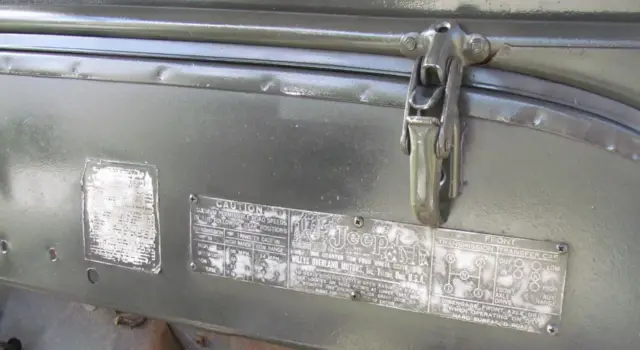
Sourcing a classic engine requires patience and knowledge of the right channels. Here are the most common avenues for finding a Jeep F-head engine for sale:
- Online Marketplaces & Forums: Websites like eBay, Craigslist, and specialized Jeep forums (e.g., The CJ-3B Page, G503 Military Vehicle Forum, Early CJ5) are excellent starting points. Many classic Jeep clubs also have classified sections. Facebook Marketplace and dedicated vintage Jeep groups are increasingly popular for peer-to-peer sales.
- Specialized Vintage Jeep Parts Dealers: Several businesses specialize in new old stock (NOS), used, and rebuilt parts for classic Jeeps. These dealers often have a network for sourcing engines or offer their own rebuilt units.
- Classic Car/Jeep Salvage Yards: While less common for complete, running engines, some specialized salvage yards or "bone yards" might have F-head engines from dismantled vehicles. These are often core engines requiring a full rebuild.
- Auto Swap Meets & Shows: Major classic car and military vehicle swap meets are fantastic places to find engines, parts, and connect with other enthusiasts who might know of engines for sale.
- Restoration Shops: Many vintage Jeep restoration shops might have spare engines from projects, or they can put you in touch with clients looking to sell.

Key Considerations When Purchasing
Acquiring an F-head engine isn’t like buying a modern crate engine. Careful inspection and due diligence are crucial.
1. Engine Condition: The Primary Factor
The condition of the engine dictates its price and the amount of work required.
- Core/Non-Running Engine: This is typically a seized, incomplete, or otherwise non-functional engine. It will require a full tear-down, machining, and new internal components. Best for those planning a complete, ground-up rebuild.
- Running/Used Engine: An engine that starts and runs, but its internal condition is unknown. It might have good compression but exhibit oil leaks, smoke, or unusual noises. Thorough testing (compression, oil pressure) is essential.
- Rebuilt/Remanufactured Engine: An engine that has been professionally disassembled, inspected, machined, and reassembled with new internal components (pistons, rings, bearings, valves, gaskets). These are often "zero-hour" engines and typically come with a warranty. This is usually the most expensive option upfront but saves significant time and potential headaches.
- Restored/Show Quality Engine: A professionally rebuilt engine that has also undergone extensive cosmetic restoration, including correct paint, hardware, and meticulous detailing. Ideal for concourse-level restorations.
2. Completeness and Accessories
A bare long block (block and head) is much cheaper than a complete engine. Consider what accessories are included:
- Carburetor (original Carter YF is common)
- Distributor
- Starter
- Generator/Alternator
- Water pump and fan
- Exhaust manifold
- Flywheel and clutch assembly (if applicable)
Missing components will add to your overall cost and effort.
3. Inspection and Testing
If possible, inspect the engine in person.
- Visual Inspection: Look for cracks in the block or head (especially around freeze plugs), excessive rust, signs of major oil/coolant leaks, or previous amateur repairs. Check for broken or missing parts.
- Compression Test: If the engine is running or can be turned over, a compression test is vital. Consistent readings across all cylinders are good. Low or widely varying readings indicate worn rings, valves, or head gasket issues.
- Oil Pressure: For running engines, observe the oil pressure, both cold and hot. Low pressure can indicate worn bearings.
- Listen for Noises: If running, listen for knocks, ticks, or unusual sounds that might point to internal issues.
- Check Fluids: Look at the oil (sludge, milky color indicates water) and coolant (rust, oil).
- Turn it Over (Manually): If non-running, try to turn the crankshaft by hand (with a wrench on the crank bolt). It should turn smoothly without binding. If seized, it’s a core.
4. Documentation
Ask for any available documentation, such as rebuild receipts, history of the vehicle it came from, or proof of ownership.
5. Shipping and Logistics
These engines are heavy. Factor in freight shipping costs, which can be significant. Ensure the engine is properly crated or secured for transport.
The Rebuild Process: A Practical Overview
Most F-head engines found for sale will either need a rebuild or have already been rebuilt. The process typically involves:
- Disassembly and Inspection: Complete tear-down, cleaning, and thorough inspection of all components for wear, cracks, or damage.
- Machining: Boring cylinders, resurfacing the block and head, grinding the crankshaft, valve seat work.
- Parts Replacement: New pistons, rings, bearings (main, rod, cam), valves, valve guides, springs, timing gears, oil pump, water pump, and a complete gasket set are typically replaced.
- Assembly: Careful reassembly with proper clearances and torque specifications.
- Testing: For professional rebuilders, this often includes a dyno test or break-in run.
While the F-head is relatively simple, a professional rebuild ensures longevity and performance. It’s often advisable to have an experienced machine shop handle the critical machining steps.
Installation and Compatibility
If you’re replacing an existing F-head, installation is usually a straightforward bolt-in process. However, if you’re upgrading from an earlier flathead L-134 engine to an F-134, there are some differences to be aware of:
- Bell Housing: The F-head uses a different bell housing bolt pattern than the flathead. You’ll need the correct bell housing or an adapter.
- Motor Mounts: The motor mounts differ between the L-head and F-head.
- Radiator: The F-head runs hotter and requires a more efficient radiator.
- Gauges/Wiring: Minor adjustments might be needed for the electrical system.
Always research specific year and model compatibility to avoid surprises.
Estimated Price Range for Jeep F-Head Engines
The price of a Jeep F-head engine can vary significantly based on its condition, completeness, and the seller. The following table provides a general estimate:
| Condition | Description | Estimated Price Range (USD) | Notes |
|---|---|---|---|
| Core/Non-Running | Engine block, head, and internal components. Seized, incomplete, or unknown condition. Requires full rebuild. | $300 – $800 | Good for parts or a complete restoration project where you plan to rebuild from scratch. Expect additional costs for machining, parts, and labor. Often missing accessories (carb, distributor, etc.). |
| Running/Used | Starts and runs, but internal condition and longevity are uncertain. May have leaks, smoke, or low compression. | $800 – $2,000 | Best for those who can inspect in person and perform compression/oil pressure tests. May need minor repairs, a carburetor rebuild, or gasket replacement. Still carries risk and might require a rebuild sooner than later. |
| Rebuilt/Remanufactured | Professionally disassembled, inspected, machined, and reassembled with new internal parts. Often "zero-hour." | $2,500 – $4,500+ | This is often the most cost-effective option in the long run, as it saves significant time and effort. Typically comes with a warranty from the rebuilder. Usually includes essential accessories (carb, distributor, water pump, etc.). Price varies based on extent of rebuild and included components. |
| Restored/Show Quality | Fully rebuilt and cosmetically restored to original specifications or better. Meticulous attention to detail. | $4,000 – $6,000+ | For high-end, concourse-level restorations where authenticity and appearance are paramount. Includes correct paint, hardware, and often period-correct accessories. These are typically "turn-key" engines ready for installation. |
Note: These prices are estimates and can fluctuate based on market demand, location, seller reputation, and specific engine characteristics.
Frequently Asked Questions (FAQ)
Q1: What vehicles used the Jeep F-Head engine?
A1: The F-134 Hurricane F-head engine powered a variety of Willys and Kaiser-Jeep models, including the CJ-3B, CJ-5, CJ-6, Willys Wagon, Willys Pickup, Willys FC (Forward Control) trucks, and the military M38A1.
Q2: What’s the main difference between an F-Head and a Flathead (L-Head) engine?
A2: The primary difference is the valve arrangement. The Flathead (L-head) has both intake and exhaust valves located in the engine block. The F-head (IOE – Intake Over Exhaust) has intake valves in the cylinder head (overhead) and exhaust valves in the engine block (side-valve). This design allowed the F-head to use larger intake valves, improving airflow and increasing horsepower and torque compared to the flathead.
Q3: Are parts still available for F-Head engines?
A3: Yes, surprisingly good availability! Many specialty vintage Jeep parts suppliers offer new old stock (NOS) and reproduction parts for F-head engines, including pistons, rings, bearings, valves, gaskets, and even complete rebuild kits.
Q4: How much horsepower does an F-Head make?
A4: The Willys F-134 Hurricane F-head engine typically produced around 75 horsepower and 114 lb-ft of torque from the factory. This was a significant improvement over the L-134 Flathead’s 60 hp.
Q5: Can I put an F-Head in my flathead Jeep?
A5: Yes, it’s a common upgrade, but it’s not a direct bolt-in. You’ll need to account for differences in the bell housing bolt pattern, motor mounts, and potentially the radiator. It requires some fabrication and careful planning, but it’s a well-documented swap.
Q6: What should I look for when inspecting an F-Head engine for sale?
A6: Look for cracks in the block or head, signs of major oil/coolant leaks, excessive rust. If possible, perform a compression test, check oil pressure (if running), and listen for unusual noises. Try to turn the crankshaft by hand to check for seizing.
Q7: Is it worth rebuilding an F-Head engine?
A7: For restoration purposes or for a reliable classic driver, absolutely. The F-head is a robust, well-understood engine, and a properly rebuilt unit can provide decades of reliable service. The cost of a rebuild versus buying a rebuilt unit should be weighed against your time, skills, and budget.
Conclusion
The pursuit of a "Jeep F Head Engine For Sale" is more than a transaction; it’s an investment in a piece of automotive heritage. These engines, with their distinctive design and robust performance for their era, are central to the identity of many cherished vintage Jeeps. By understanding their history, knowing where to look, and performing thorough inspections, you can confidently acquire an F-head that will serve as the heart of your restoration project or provide reliable power for your classic off-roader. The enduring legacy of the F-head engine ensures that these venerable powerplants will continue to rumble to life, carrying enthusiasts on countless adventures for years to come.

